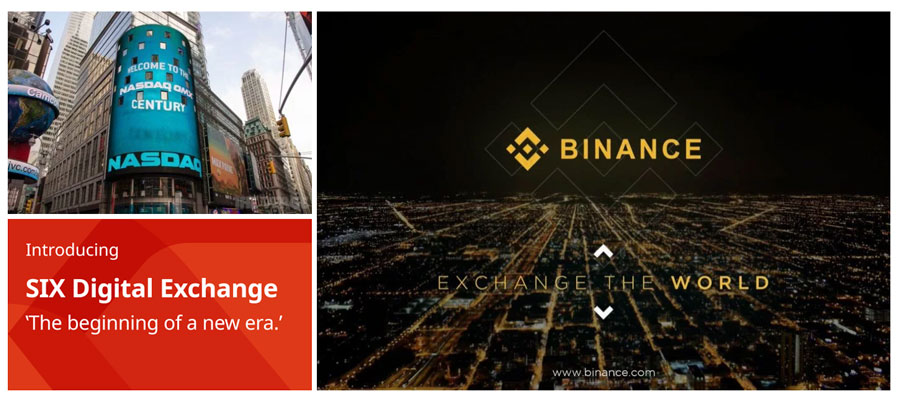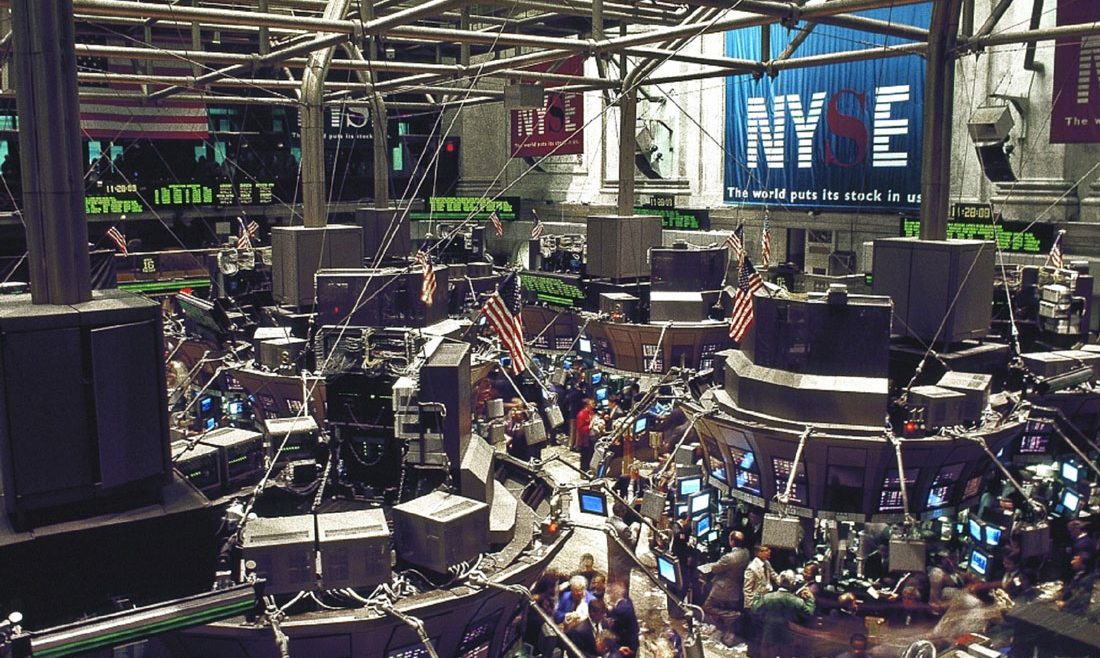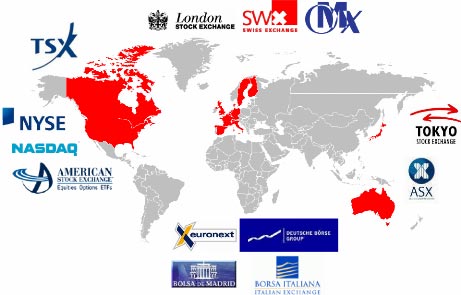A world of #WhenBinance & #WhenSIX
Stock Exchanges are the fastest and most efficient data-processing large scale system that we humans have designed so far [1].
Stock exchanges need roughly 15minutes of trade to determine the effect of a piece of news – political, scientific, ecological, societal etc – on the prices of shares.

DLT technology may change this but the How is up in the air.
In Stock exchanges and listed assets – Part I I looked at Nasdaq`s use cases. In this second part, I am sharing insights on the pulse of the securities markets as they reshaped and get pulled (down or up) by DLT technology. As mentioned in the Foreword of the SIX white paper The Future of the Securities Value Chain, one of the reasons to look into this topic is to sharpen our understanding of what the relevant future may look like and to seek feedback and open a conversation.
With DLT technology there will be a boom in what is tokenized or securitized in traditional parlance. There is no disagreement on this front, just on the degree maybe and the when. However, the devil is in the details as always. How will this happen?
If we all agree that there will be more securities out there, what will happen to Primary markets, Secondary markets and the post-trading processes? The 64page SIX white paper, describes eight possible scenarios with enough details – as they know how these markets operate currently – and in their Summary two pager they pick the two most likely ones. Of course, opinions will vary on the likeliness and this is where it gets interesting.
The way I see the world right now, is that
we have moved from #WhenMoon #WhenLambo to a world of #WhenBinance.
Even at LyCI online webinar presented by Richard Olsen, CEO of Lykke, the question of #WhenBinance for LyCI, was asked. Day traders and speculators naturally want listed assets but through the accelerated evolution of digital assets over the past two years, we have actually realized that investors also continue to attribute value to the listing of an asset. #AndTheIrony is that this signaling effect comes from the conventional investment culture and Not from the P2P progressive culture that Satoshi Nakamoto made technologically possible.
#AndTheIrony is that for now, both retail and institutional investors in the digital assets world perceive listing as a measure of fundamental quality. Whether it is about cryptocurrencies, utility and payment tokens, asset-backed coins (commodities, real estate, revenue sharing), security tokens etc. listing makes them more valuable.
The way we are plowing ahead to increase adoption of digital assets, we are consciously or unconsciously, making sure that LISTED ASSETS WILL CONTINUE TO BE THE DOMINANT STRUCTURE IN SECURITIES MARKETS.
In such a world, we could see growth in issuing marketplaces for digital assets of all sorts, but continuously tied to the new digital exchanges. As we speak there are several issuing marketplaces launched for digital assets: Securitize, TokenSoft, Neufund, Desico, Mobu, …. And more than needed exchanges to list these assets. At the same time, incumbents like SIX and Nasdaq, are building infrastructure to prepare for a position in the digital assets boom. Most, if not all, of these initiatives, will deploy permissioned central ledgers that deviate from the Satoshi Nakamoto core principals.
Right now we are heading straight into a future for securities that is based on permissioned central ledgers and in which listed securities remain the only way to unlock full value and then some. We will have reduced costs, reduced intermediaries, a larger pie of digital assets but we will have not changed this:
Exchanges will remain the fastest and most efficient data-processing large scale system that we humans have designed.
A Satoshi Nakamoto fully aligned world, is one in which exchanges disappear simply because listing does not add value. In such a world, all issuing marketplaces are open and not permissioned. Issuing becomes ubiquitous. Imagine a world in which either on Amazon or Wechat, even retail can issue a security or a token, and investors can directly access these. This requires to move Fintech crowdfunding venues like Angelist and Crowdcube, and P2P lending venues like Prosper and Lending Club, onto protocols like Harbor, Dharma, or Swarm. Then to get all large corporates (BMW, Johnson & Jonhson, ect) the software to issue and trade P2P within their ecosystems – i.e. DEX software. But before all this can happen, we need to solve the Digital Identity issue for both individuals and entities.
In a Satoshi Nakamoto fully aligned world, Exchanges become obsolete.
[1] The view of the Austrian school of economics



